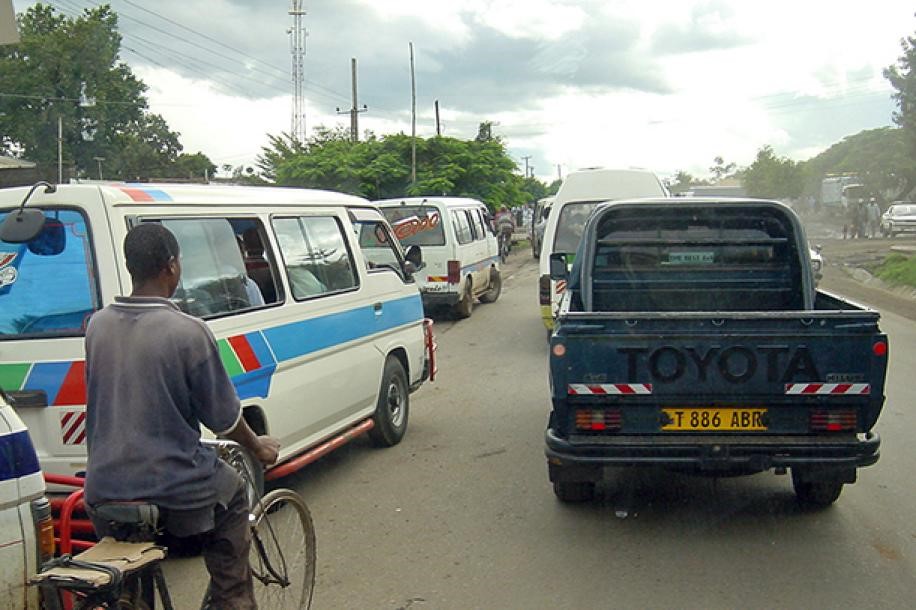Commissioned education from Lund University contributes to the reduction of traffic fatalities
Every year, traffic accidents account for more than 1.3 million deaths worldwide. In an effort to reduce this figure, Lund University offers international courses in road safety management for professionals. In August this year, Lund University was privileged to welcome participants from Botswana, Uganda, Zambia, Malawi and South Africa.
– Published 19 October 2018

Over the past 35 years, Lund University has developed and run training courses for professionals in road safety management, which have led to successful change projects developed by participants and implemented in their home countries. These projects include initiatives such as the introduction of mandatory helmets in Vietnam, 30 km/hour zones in Pretoria, South Africa, and legislation prohibiting the use of mobile phones and imposing the use of seat belts in Ethiopia.
Jessica Hansson, project manager at LUCE, Lund University’s division for commissioned education, has noticed an increase in demand for courses in road safety management, particularly from Africa.
“We now see a major investment in bringing about change and reducing the number of fatal traffic accidents. Many public authorities and organisations in different countries have chosen to scale up, sending three participants per organisation rather than investing in one single individual to our most recent training course in August. In addition, between 2004 and 2010, the road safety management programme was funded by Sida (the Swedish International Development Cooperation Agency), whereas the participants’ organisations now have to finance the courses themselves.”
In recent weeks, requests for major training initiatives have also come from the ministries of transport in Iran, Namibia and Saudi Arabia.
The goal is to reinforce capacity-building in developing countries
For many years, LUCE and the research group at Transport and Roads at the Faculty of Engineering (LTH) have worked with strategic recruitment of participants to reinforce capacity-building in developing countries. During 2004–2010, only participants from middle management with a mandate to work with change processes were selected.
“Now we see the outcome of that recruitment, as our alumni are now in management positions and send their employees on training courses to strengthen their expertise”, says Jessica Hansson.
Spreading knowledge of observations in the field
The course in road safety management offered in August this year to participants from five African countries comprised lectures, case studies, workshops and field observations. The course organiser is particularly keen to spread knowledge about observing road user behaviour.
“Many people who work on road safety management stay in their offices and analyse accident reports from the police. But we know that under-reporting of accidents is a major problem; this type of accident analysis can give an inaccurate picture, which in turn leads to inappropriate measures. At Lund University, we go out and observe how people behave in traffic and therefore know a lot more about what actually goes on out on the roads, what is really behind the accidents. This is one of our strengths”, says course director András Várhelyi, a professor with over 25 years’ experience of teaching road safety management.
The enthusiasm of the participants was immediate.
“What we saw here was fantastic. Cyclists and pedestrians really interacted with the traffic without many conflicts. Back home, that is not the case and we must find a solution to it”, said Lawrence S. Thebe, one of the course participants, who works at the Ministry of Transport in Botswana.
Insufficient data on the number of people killed and injured
In developing countries, where traffic environments are still under development, it is particularly important to have a complete picture of the number of people involved in serious accidents. However, the most common approach is only to register the number of victims who died at the scene of the accident. In Sweden, the accidents database also covers those who die within thirty days of a traffic accident, as well as reports of serious injuries.
“One of the things I take with me from here is that pedestrians, indeed all those who use the road traffic system and are involved in some kind of accident, not necessarily with a motor vehicle, must be included in road accident statistics. If you have these statistics, it is very helpful for planning”, said Lawrence S. Thebe.
